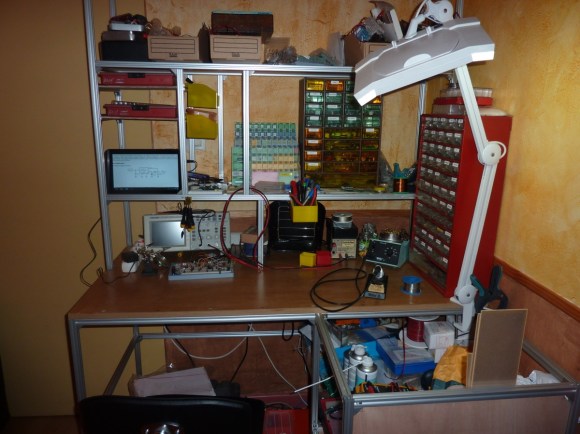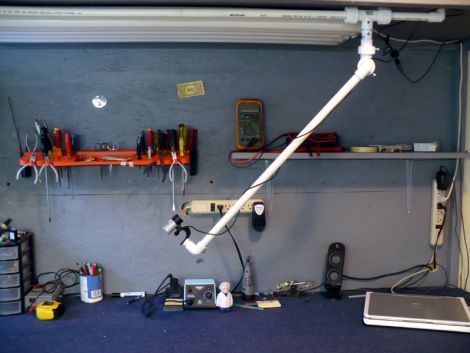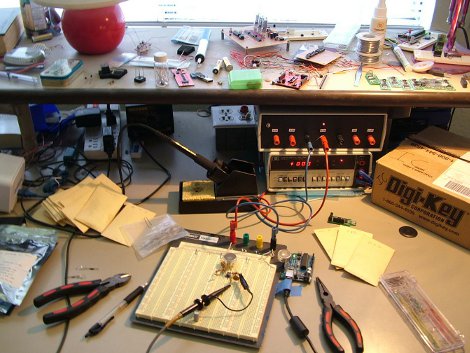Whenever I release a hackaday video, I invariably get comments and emails about my workbench. Some people are telling me to clean up, others are asking me about things they see in the background.
This isn’t just a set that I film on. Obviously my videos aren’t high enough quality for people to assume that either. This is my actual workbench, made and used by my grandfather. I do enjoy keeping it decorated though. I try to keep a piece of as many past projects as possible hanging on my bench to serve not only as inspiration to me, but also as an interesting backdrop for the videos.
I make no attempts to hide my upcoming projects when I shoot videos. If you pay close enough attention, you can sometimes see projects appear on my bench in videos before the actual project video hits youtube.
I love my workbench. You should love yours too. Hey, maybe you could do a tour of it and post it on youtube for us to admire! Just try not to say “workbench” as many times in a row as I did.

















